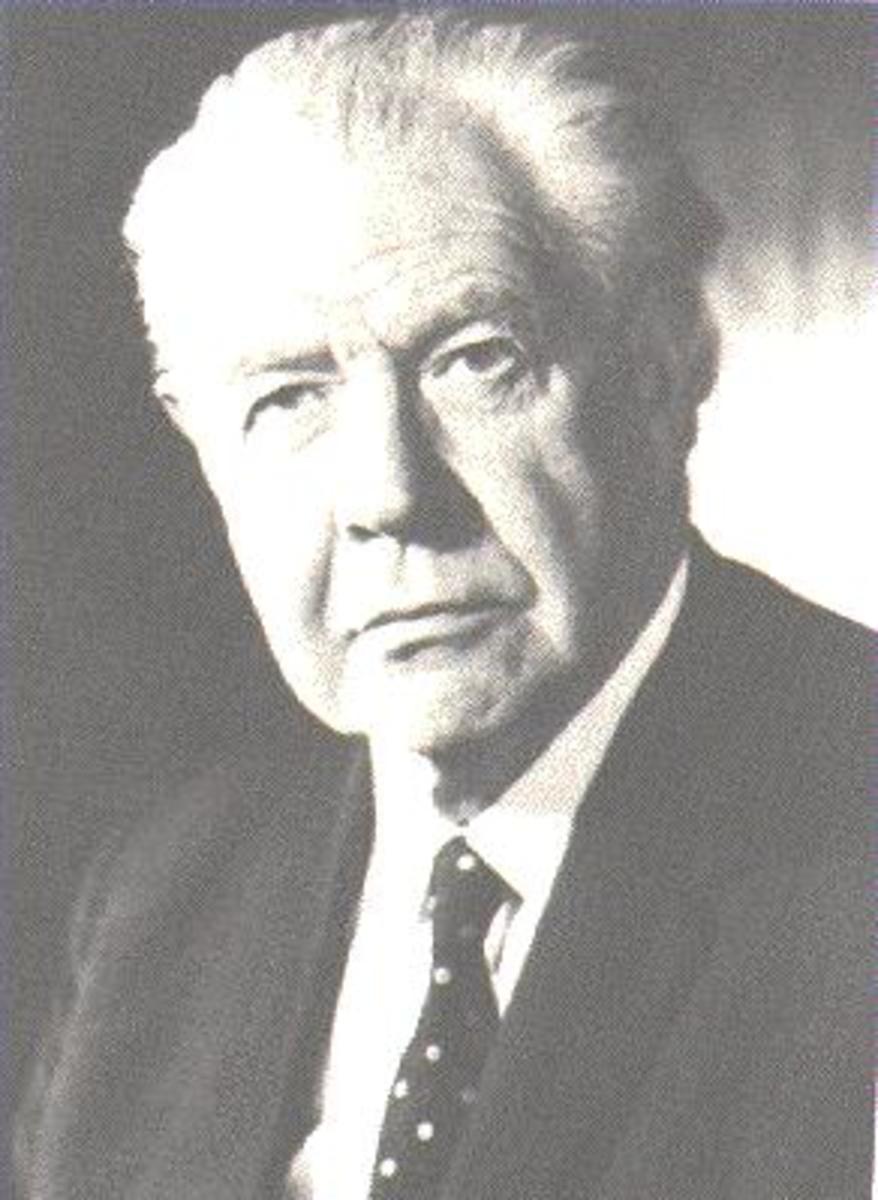The Overview on the Concepts, Principles and Applied Theories of Health Economics
This article provides comprehensive general information about the concepts, principles and applied theories in Health Economics. Basically, the content in this article is the application of economics in the field of health profession. It focuses in the study of the allocation scarce resources through the operation of medical centers, hospitals and clinics. Likewise, the production of medical goods is concentrated in the operation of pharmaceutical companies, drugstores, medical equipment and supplies enterprises and other related health corporate entities. The existence of medical services relies so much in the operations of health institutions that need to understand the concept of medical price mechanisms, the return-of –investments of acquire health technologies, the user fees of medical equipment and facilities, and the evaluation of cost benefit and effectiveness in the medical programs. The understanding of these health economics concepts and theories will provide the necessary management competence of the medical personnel particularly nurses to know the operation of the hospital or medical center in the economic enterprise of the health sector. That’s why it provides preliminary concepts in health along the standard advocacy of “Health for All” by the World Health Organizations as implemented by the Department of Health .
1. Concepts, Principles and Determinants of Health
The concepts, principles and determinants of health revolves in the study of physical, mental and social well being of a person.. There are specific measures to apply the health outcomes in relation to health and disease. The most common to determine the quality of life of individual is the life expectancy. The longer life in the absence of diseases has an indication of good health. It has a complete physical , mental and social well being to enjoy its existence and enough economic value to live in a given society. However, the presence of diseases may alter its existence and could possibly endanger the life of person. The concern of illness or disease may only be solved on proper medical care through the confinement in the hospital or clinic. The existence of illness and diseases are also measured on mortality and morbidity which is available in the health sector.
The nursing students must know these standardized measures on health outcomes to determine its effectiveness of health activities and programs that seek to improve health.Furthermore, the World Health Organization provides long term objectives as to the concept for “health for all”. These are healthy living by a population educated in health problems and the appropriate responses ;a healthy environment providing shelter, food, water and sanitation, with good economic opportunities and freedom from the fear of violence; and an accessible, rational and comprehensive system of preventive treatment, care and rehabilitation services. The achievement of these long-term objectives may need substantial amount of financial resources of a country to address the concern of the poor people of the society. It is always an economic issue wherein people need money to buy medicines, to pay the medical check up fees, to pay the medical expenses in the confinement of the hospital and other related medical expenses to ensure a good health of a person.
The understanding of the concepts, principles and determinants of health will health us understand the connection to economics particularly when we are dealing with the health care intervention to treat whatever illnesses or diseases may need money as form of exchange on the services rendered in the consultation, medication and confinement in the clinic or hospital. This comes now the concepts, and principles of economics which later on extensively discuss in an integration of health and economics which is now called Health Economics
2. Concepts and Areas of Economics
Alfred Marshall defined economics as a study of mankind in the ordinary business of life; it examines that part of individual and social action which is most closely connected with the attainment and with the use of the material requisites of well being. We now closely examine the related concepts on the creation of wealth and goods to understand the substance of economics. The satisfaction of human wants is usually directed from the basic needs such as food, clothing, shelter, health and etc. In the Maslow’s Hierarchy of Needs, we consider this as the physiological needs as the basic components for survival. However, we always need money to buy things we want in the society which is considered as consumers’ good. Marshall explained that "money" or "general purchasing power" or "command over material wealth," is the centre around which economic science clusters; this is so, not because money or material wealth is regarded as the main aim of human effort.
In producing what we want it is either material or non material goods. The material goods consist of useful material things, and of all rights to hold, or use, or derive benefits from material things, or to receive them at a future time. They include the physical gifts of nature, land and water, air and climate; the products of agriculture, mining, fishing, and manufacture; buildings, machinery, and implements; mortgages and other bonds; shares in public and private companies, all kinds of monopolies, patent-rights, copyrights; also rights of way and other rights of usage. In health profession, the material goods are hospital buildings, medicines, laboratory equipment and facilities, and all tangible things that can be used in medical care.
A man's non-material goods are the internal and external non- material goods. The former consists of his own qualities and faculties for action and for enjoyment. While latter consist of relations beneficial to him with other people.The professional services of physicians, nurses , attendants and caregivers are the examples of the non-material goods.On the substance of economics, it is directed to physical gratifications and pleasures to enjoy the existence of life. This is usually the basis of utility which is directed to the things we want to buy for personal enjoyment.
The areas of economics may be classified in various ways, but an economy is usually analyzed by use of microeconomics or macroeconomics. In microeconomics, it examines the economic behavior of agents (including individuals and firms) and their interactions through individual markets, given scarcity and government regulation. This is usually applied in the operation of private and public hospitals and other medical care services. On other hand macroeconomics examines the economy as a whole "top down" to explain broad aggregates and their interactions.
3. Concept of Health Economics
In health economics is concerned in the allocation of resources for care of sickness which need to be cured for the promotion, maintenance and improvement of health. This is the responsibility of the health sector through the Department of Health. The health care services have corresponding costs and benefits among individual and groups in society. There are two important economic variables in the study of health economics ,these are the demand and supply for medical care.
The demand for medical care is directed by the hospitalization of individual because of illness. These are the situations provided in the demand for medical care ; (1)The payment of hospitalization fee such physician fee, medical fee, drugs and medicine expenses, and hospital room fees; (2)The payment of medical fees for confinement and check up of elderly people on illnesses such as diabetes, stroke, heart attacks, cancer, tuberculosis, influenza including breast cancer, uterus complications, post-partum mothers and other related diseases; (3)The individual buys paracetamol, anti-biotic drugs, and pain relieving medicine in pharmaceutical or drugstores; (4) When individual is willing to buy medicine as prescribe by the doctor such as case of life threatening illness such as dengue, typhoid fever, influenza, pneumonia and other related diseases; (5) The high income patient has the tendency to be confine in the more expensive hospital. The private hospitals have high fees in the use of hospital private room, physician fees, laboratory fees, medicine expenses and other hospital fees; (6)The poor patients prefer to be confined in district or provincial government hospitals because it’s less expensive than private hospital; and (7)The constant check up for more serious illness which means paying more on consultation and check up fees for physician. On the supply for medical care is directed to the business establishments such as hospitals, clinics, medical centers, drugstores, and pharmaceutical companies. These are the producers and suppliers of medical goods such as medicines, drugs, medical equipment and facilities. The services being offered by the hospitals, clinics and medical centers are the consultation fees, medical fees, laboratory fees, and other related hospitalization fees.
The applicability of the health economics on the demand and supply for medical care is presented in the establishment of hospitals .There are standards set by the Department of Health in the operation, regulation and establishment of private hospital, clinic, medical center and government hospital. As part in the study of demand, the patient must be protected to the equal access to health in the confinement to any hospitals in case emergency cases.
The study of heath economics must not only concentrated on the profit of medical goods and services through the establishment of hospitals, clinics, drugstores and pharmaceutical companies. The nursing students and health professionals must be primarily aware to the access of health to poor people. The mechanism of social equity in the health sector must always be given emphasis on serving the poor people .
The last part in the discussion of health economics is concentrated in the application of demand and supply in economics. This is followed by the price system and the general rule on market forces in economics. The concepts and principles presented on demand, supply and the price system.
In the demand , the individual who needs medical care usually depend on many socio economic and cultural factors to buy medical products and confinement in the hospital. On socio-economic factor, the income of the family is the primary reason to be confined in a hospital. Those hospitals with lower rates on payment of medical bills have higher demand for patients. This holds true in drugstore with lower prices of medicine.
The concept of health care for supply is translated into the establishment of medical hospital or clinics. The economic variables in the establishment of hospital/clinic are the growing population of the area which increases the number of patients. Although there are other hospitals in the locality, they can still establish medical centers particularly when this is already a highly urbanized center.
4. Economic Evaluation
There are specific measurements for the viability of health services in treating diseases and illness which is called economic evaluation. These are important techniques and tools for health economics to evaluate the health outcomes by studying the medical cost, profit and benefits taken from the patients’ health. There are four (4) forms of economic evaluation which are used predominantly in public health, these are Cost Analysis (CA), Cost Effective Analysis (CEA), Cost Utility Analysis (CUA) and Cost Benefit Analysis(CBA).
This is to ensure the economic feasibility, acceptability or viability in deciding to implement a specific health program whether it is in public sector or private sector. It should be noted that the most common profitability indicators being used to come up with feasibility study of the private sector in the establishment of hospitals, clinics and medical centers is the Cost Benefit Analysis. This is to ensure that their investments (cost of doing the project) are highly feasible. The return of investments are sustained at given supply price such as the user rate of hospital services, laboratory examinations , professional fees of health personnel and other hospital charges.
The economic evaluations on cost analysis, cost effective analysis, and cost utility analysis are being used to decide the economic acceptability of the project to support the prevention, promotion and rehabilitation of particular illnesses or diseases for social welfare. The health services and programs are implemented to purchase the needed medical supplies, equipment and facilities including the professional fees of health personnel to specific target clients. The public health sector has to implement health services and programs such as vaccines for communicable and non-communicable diseases, the used of contraceptives for the reproductive health, cancer screening, spray of DDT and etc. These examples on the implementation of health programs have direct, indirect and intangible benefits such as reduction in health risk, pain and suffering which cannot be estimated form market data.
5.Health Care Technology
The applications of new technology have improve the treatment of patients. It facilitates the early detection and diagnosis for the immediate recovery of patients. These health care technologies such as the areas of antivirals, biotechnology, diagnostic imaging, molecular diagnostics, organ and tissue replacement, surgical techniques, wound care, and computer technology have helped to improve health care delivery and patient outcomes.








